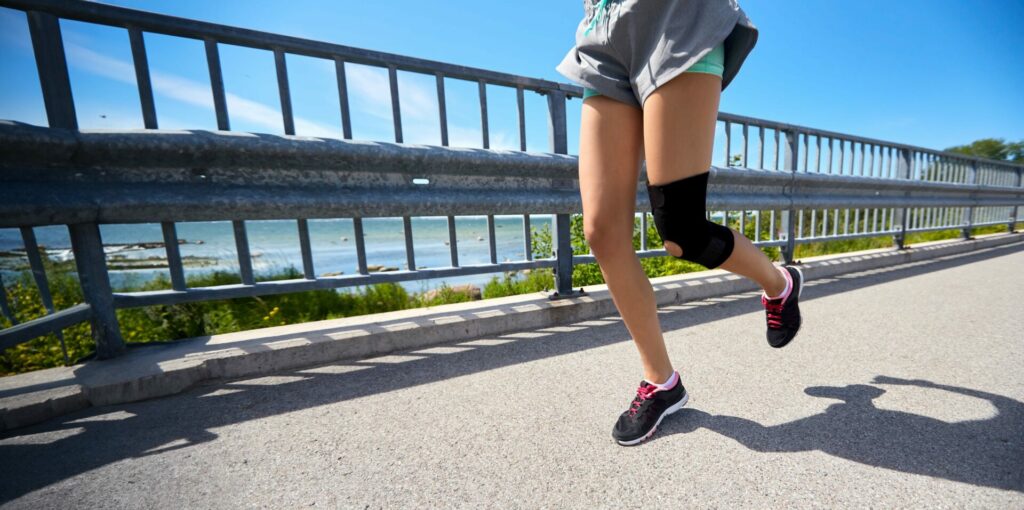The Athlete’s Guide to Knee Injuries: From Prevention to Recovery
Understanding Athletic Knee Injuries
The knee might seem simple from the outside, but this complex joint bears the brunt of athletic performance. At Signature Orthopedics, we see countless athletes whose seasons – and sometimes careers – hang in the balance due to knee injuries. Understanding these injuries is the first step toward prevention and successful recovery.

The ACL: An Athlete’s Nemesis
That dreaded “pop” followed by immediate swelling – the hallmark signs of an ACL tear strike fear into athletes across all sports. The Anterior Cruciate Ligament (ACL) plays a crucial role in stabilizing the knee during cutting, pivoting, and landing movements. Basketball players changing direction, soccer players striking the ball, and football players taking hits are particularly vulnerable to this injury.
Prevention starts with proper movement patterns. Many ACL tears occur during non-contact situations, often due to poor landing mechanics or sudden direction changes. Training programs focusing on proper jumping and landing techniques, along with strengthening the surrounding muscles, can significantly reduce ACL injury risk.
Meniscus Injuries: More Than Just Wear and Tear
The meniscus acts as your knee’s shock absorber, and when it tears, every step can become painful. These c-shaped pieces of cartilage often sustain damage during twisting movements or deep squats. While older athletes might experience degenerative tears, younger athletes typically suffer acute tears during sports activities.
Recent advances in treatment have moved away from the old “cut it out” approach. When possible, we now focus on meniscus repair rather than removal, especially in younger athletes. This preservation approach helps maintain the knee’s natural cushioning and may reduce the risk of future arthritis.
Tendonitis: The Silent Season-Ender
Unlike the dramatic onset of ACL tears, tendonitis creeps up slowly. Patellar tendonitis, often called “jumper’s knee,” particularly affects athletes in jumping sports like volleyball and basketball. This overuse injury can sideline athletes just as effectively as acute injuries if not properly managed.
The key to treating tendonitis lies in load management. While complete rest isn’t always necessary, modifying training intensity and incorporating proper warm-up routines makes a significant difference. We’ve seen great success with graduated loading programs that strengthen the tendon without overwhelming it.
Prevention Strategies That Actually Work
The best treatment for knee injuries is preventing them in the first place. Modern sports medicine has identified several effective prevention strategies. Proper warm-up routines that include dynamic stretching and movement preparation set the foundation for injury prevention.
Strength training plays a crucial role, but it’s not just about building bigger muscles. Focus on balanced development of all leg muscles, particularly the often-neglected posterior chain. Hamstring strength, for instance, helps protect the ACL during high-risk movements.
Treatment Approaches: Beyond the Basics
When injuries do occur, treatment approaches have evolved significantly. While surgery remains necessary for complete ACL tears, partial tears and other knee injuries often respond well to conservative treatment. Advanced techniques like platelet-rich plasma (PRP) therapy show promising results for certain conditions.
Recovery and Return to Sport
The journey back to competition requires patience and dedication. At Signature Orthopedics, we develop individualized return-to-sport protocols that ensure athletes regain not just basic function, but sport-specific capabilities. This might mean working on cutting movements for soccer players or jumping mechanics for basketball players.
The Mental Game of Recovery
Physical recovery is only part of the equation. The psychological impact of knee injuries can be significant, often requiring specific attention during rehabilitation. Fear of re-injury can hold athletes back from performing at their best, even after physical healing is complete.
Long-term Considerations
Treating knee injuries isn’t just about getting back on the field – it’s about maintaining joint health for life. Our treatment approaches consider both immediate athletic goals and long-term joint health. This might mean modifying playing style or incorporating preventive exercises into regular training routines.
Your Partner in Athletic Performance
At Signature Orthopedics, we understand that every athlete’s situation is unique. Whether you’re dealing with an acute injury or chronic knee pain, our team of specialists can help develop a treatment plan that gets you back to your sport safely and effectively.
Take the First Step
Don’t wait until knee pain sidelines you completely. Contact Signature Orthopedics to learn more about our comprehensive approach to treating and preventing athletic knee injuries. Together, we’ll keep you performing at your best, protecting your knees for both today’s game and tomorrow’s challenges.
